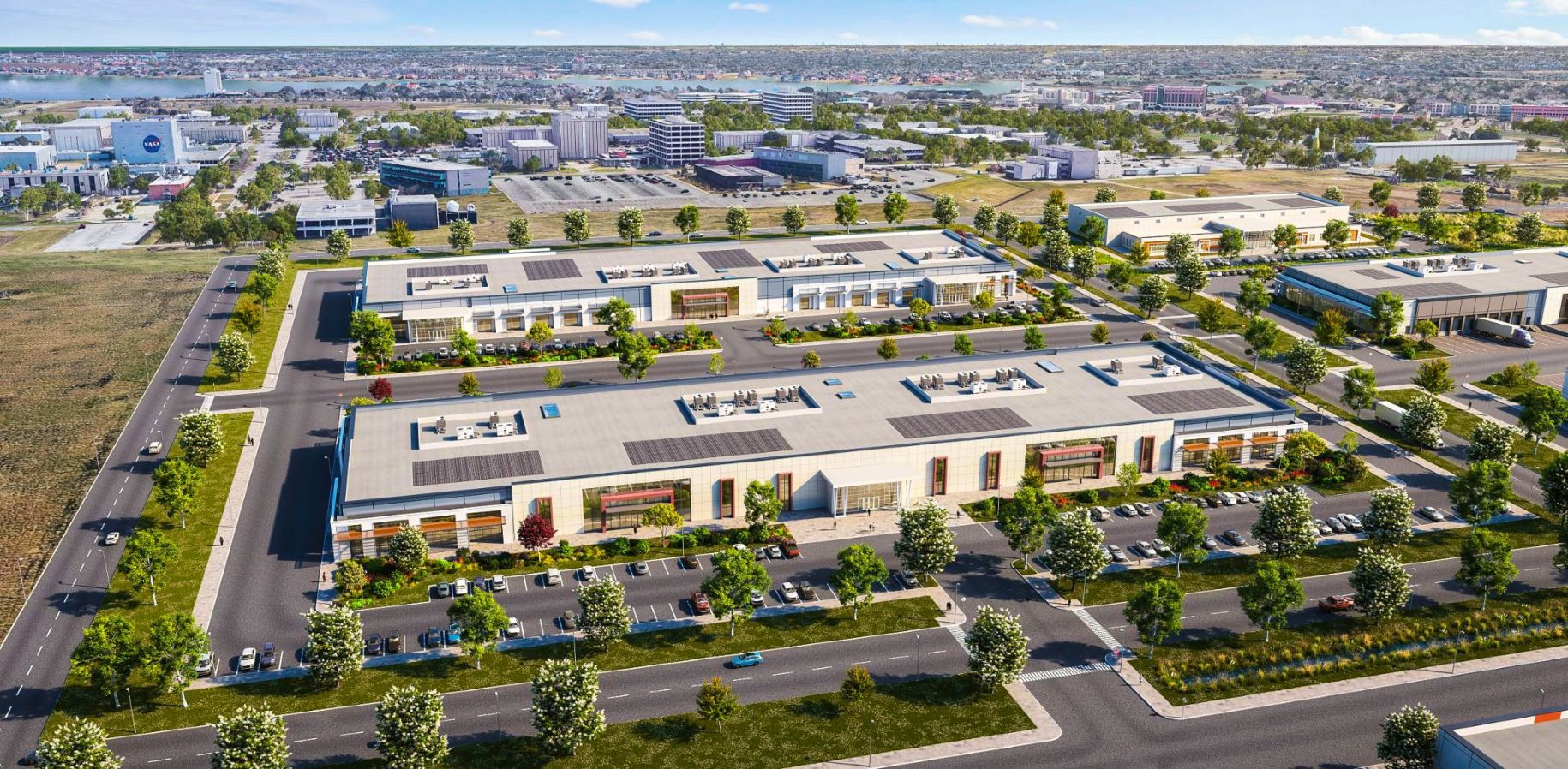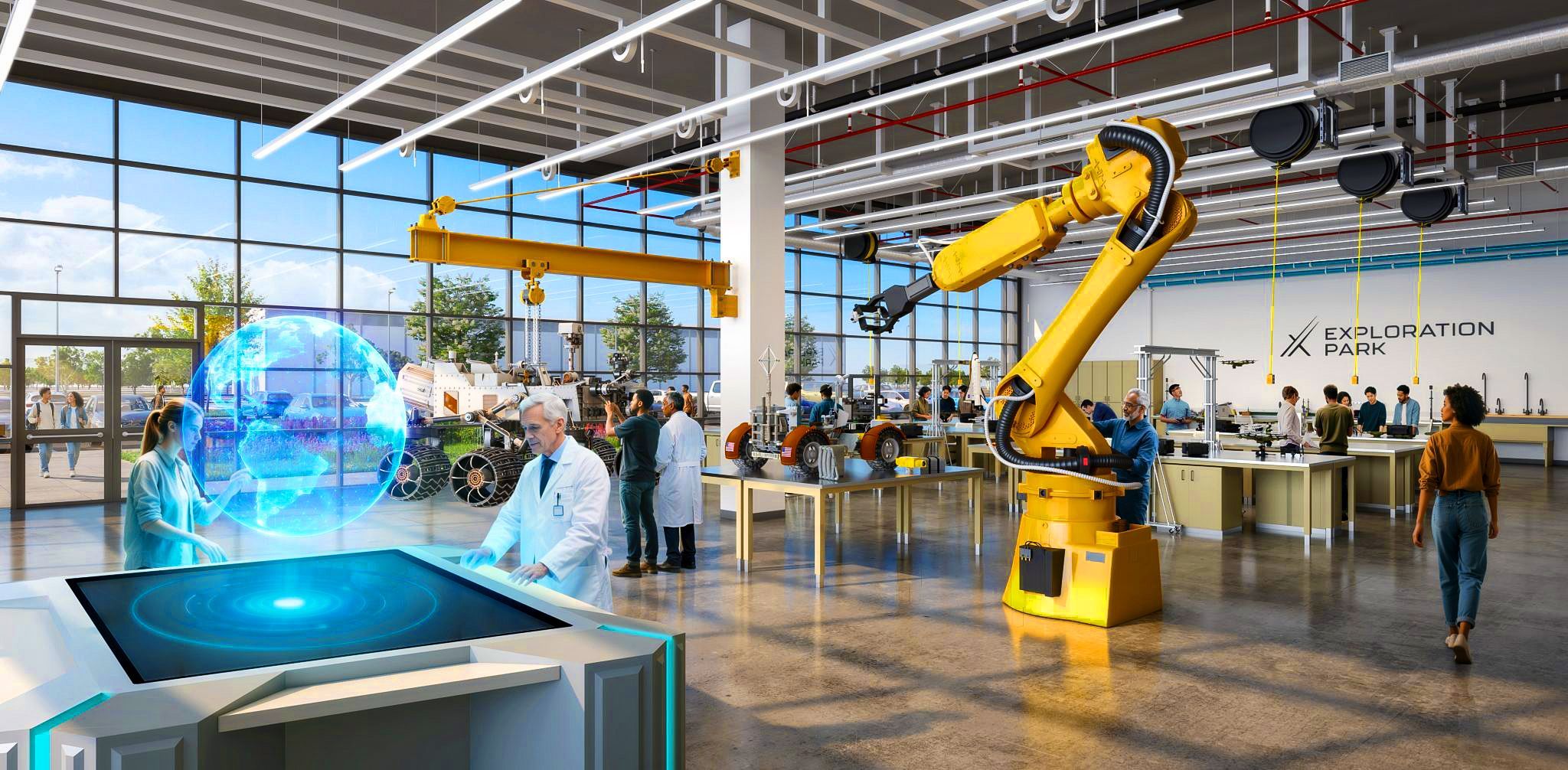NASA’s Exploration Park Gains Momentum with New Tenant, Project Partners
Published Jun 16, 2025 by Hailea Schultz
Exploration Park, the groundbreaking 207-acre aerospace campus planned at NASA’s Johnson Space Center, is gaining momentum as it moves closer to construction.
Houston-based KBR, a global leader in human spaceflight and aerospace services, will serve as one of the park’s anchor tenants, operating a 45,000-square-foot space food innovation facility focused on customized food systems, packaging and nutrition to support the growing low Earth orbit economy.
“Exploration Park is designed for companies in the space ecosystem, such as KBR, to develop, produce, and deploy innovative new technologies that support space exploration and commerce,” said Simon Shewmaker, Head of Development at ACMI Properties, the developer behind Exploration Park. “This project is moving expeditiously, and we’re thrilled to sign such an innovative partner in KBR, reflecting our shared commitment to building the essential infrastructure of tomorrow for the next generation of space innovators and explorers.”
To help bring the campus to life, ACMI also announced the addition of key project partners: Griffin Partners will serve as co-developer, with Gensler leading design and Walter P Moore overseeing civil engineering.
About Exploration Park
Exploration Park is designed to serve as a hub for commercial space innovation and human spaceflight, supporting missions to the Moon, Mars and beyond. The project builds on Houston’s long-standing reputation as Space City and aims to cement the region’s role as a global leader in the space industry.
“For more than 60 years, NASA Johnson has been the hub of human space exploration,” said NASA Johnson Space Center Director Vanessa Wyche in a statement. “This Space Systems Campus will be a significant component within our objectives for a robust and durable space economy that will benefit not only the nation’s efforts to explore the Moon, Mars and the asteroids, but all of humanity as the benefits of space exploration research roll home to Earth.”
Once complete, the campus will feature at least 20 build-to-suit facilities that can accommodate at least 1.5 million square feet of space. It will support a range of uses including R&D, laboratories, clean rooms, office space and light manufacturing, and will serve key sectors such as aerospace, robotics, life support systems, advanced manufacturing and artificial intelligence.
At the center of the development is the $200 million Texas A&M Space Institute, funded by the Texas Space Commission. The institute, which broke ground last year, is designed to drive collaboration across academic, government and commercial sectors, while also serving as a pipeline for talent through robust workforce training programs.
What’s Next
Construction on the first phase of Exploration Park is slated to begin later this year, with completion targeted for the fourth quarter of 2026.
Discover more about Houston’s aerospace industry.
 The Houston Report
The Houston Report























